|
|
Published July 7th, 2021
|
Digging Deep with Goddess Gardener, Cynthia Brian
|
| Bee careful |
| By Cynthia Brian |
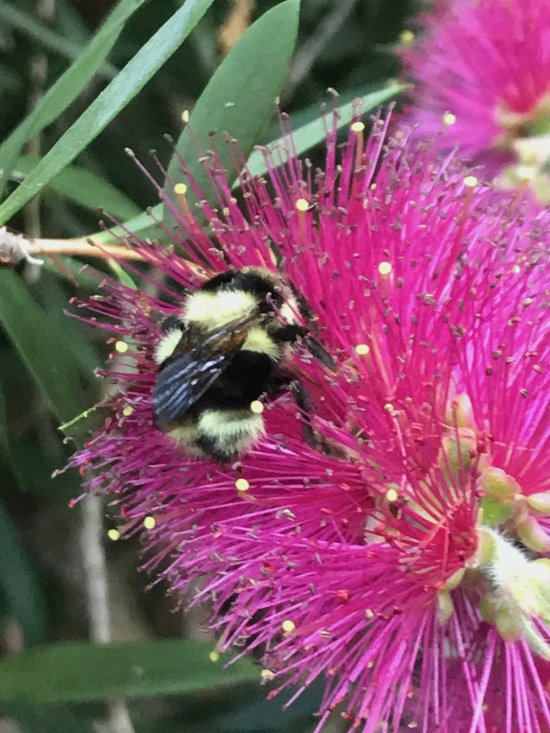 |
| Bottlebrush attracts bumblebees. Photo Cynthia Brian |
"The keeping of bees is like the direction of sunbeams." ~ Henry David Thoreau
 Barefoot and wearing our bathing suits, my daughter was teaching me Bar Method exercises out on our lawn on a beautiful summer afternoon. Partway through the practice I was stung on my foot by a honeybee dining on the clover. Clover is a wonderful addition to lawns as it adds natural nitrogen to the soil, however, when playing on the grass we must remember to be cautious as both red and white clover provide favorite nectar to our honey friends.
Barefoot and wearing our bathing suits, my daughter was teaching me Bar Method exercises out on our lawn on a beautiful summer afternoon. Partway through the practice I was stung on my foot by a honeybee dining on the clover. Clover is a wonderful addition to lawns as it adds natural nitrogen to the soil, however, when playing on the grass we must remember to be cautious as both red and white clover provide favorite nectar to our honey friends.
 We all want to attract pollinators to our gardens. The more flowers you grow equals the more food for the habitat of the pollinators. Bees, butterflies, beetles, hummingbirds, bats, and birds are responsible for 35% of our food crop and 75% of the world's flowering plants. Every three bites of food eaten can be directly thanks to the pollination from these garden friends. By helping plants reproduce, pollinators sustain our ecosystem and produce our natural resources. Sadly, the pollinator population is in jeopardy on a global level.
We all want to attract pollinators to our gardens. The more flowers you grow equals the more food for the habitat of the pollinators. Bees, butterflies, beetles, hummingbirds, bats, and birds are responsible for 35% of our food crop and 75% of the world's flowering plants. Every three bites of food eaten can be directly thanks to the pollination from these garden friends. By helping plants reproduce, pollinators sustain our ecosystem and produce our natural resources. Sadly, the pollinator population is in jeopardy on a global level.
 In 2006, the honeybee population substantially declined in a phenomenon that became known as Colony Collapse Disorder or CCD. When the worker bees disappeared, they would leave behind a queen and a few nurse bees to care for the queen and the remaining immature bees. There were rarely dead bees around the hives. Hives cannot sustain themselves without worker bees which resulted in the loss of the colony. There were many theories advanced on why the problem arose including new diseases, parasites, mites, pesticide poisoning, habitat changes, poor nutrition, and stress. Although an actual cause has never been determined, most scientists believe that CCD is related to this combination of causes.
In 2006, the honeybee population substantially declined in a phenomenon that became known as Colony Collapse Disorder or CCD. When the worker bees disappeared, they would leave behind a queen and a few nurse bees to care for the queen and the remaining immature bees. There were rarely dead bees around the hives. Hives cannot sustain themselves without worker bees which resulted in the loss of the colony. There were many theories advanced on why the problem arose including new diseases, parasites, mites, pesticide poisoning, habitat changes, poor nutrition, and stress. Although an actual cause has never been determined, most scientists believe that CCD is related to this combination of causes.
 Honey bees reflect the health of the environment. Our agriculture depends on the pollination of honey bees. If bees continue to die, consumers can expect increased food prices and more scarcity. As gardeners, we can do our part to provide habitat and food for all pollinators and beneficial insects, including bees.
Honey bees reflect the health of the environment. Our agriculture depends on the pollination of honey bees. If bees continue to die, consumers can expect increased food prices and more scarcity. As gardeners, we can do our part to provide habitat and food for all pollinators and beneficial insects, including bees.
 Here are some ways individual gardeners can make a difference while creating harmony in the landscape:
Here are some ways individual gardeners can make a difference while creating harmony in the landscape:
 - Support the pollinator population all season by including plants that bloom spring until the beginning of winter. Bumblebees need early-season nectar and pollen while bees need late-season blooms for winter hibernation.
- Support the pollinator population all season by including plants that bloom spring until the beginning of winter. Bumblebees need early-season nectar and pollen while bees need late-season blooms for winter hibernation.
 - Add easy-to-grow natives and native hybrids to your garden.
- Add easy-to-grow natives and native hybrids to your garden.
 - Replace barren areas with wildflowers and perennials.
- Replace barren areas with wildflowers and perennials.
 - Include clover in your lawn.
- Include clover in your lawn.
 - Avoid using any pesticides or herbicides.
- Avoid using any pesticides or herbicides.
 - Provide a source of water by including a fountain or even a shallow birdbath with a landing pad of stones or pebbles.
- Provide a source of water by including a fountain or even a shallow birdbath with a landing pad of stones or pebbles.
 - Pollinators need a sheltered habitat of rocks, trees, shrubs, and ornamental grasses.
- Pollinators need a sheltered habitat of rocks, trees, shrubs, and ornamental grasses.
 In general, bees tend to enjoy plants that have flat flower clusters, short tubular shapes, and single flowers which allow them to access the nectar and pollen easily. Attract and Feed Pollinators, especially bees and Bumblebees by planting a selection of these specimens:
In general, bees tend to enjoy plants that have flat flower clusters, short tubular shapes, and single flowers which allow them to access the nectar and pollen easily. Attract and Feed Pollinators, especially bees and Bumblebees by planting a selection of these specimens:
 Anise
Anise
 Aster
Aster
 Bachelor Button
Bachelor Button
 Bee Balm
Bee Balm
 Black-Eyed Susan
Black-Eyed Susan
 Blazing Star
Blazing Star
 Bottlebrush
Bottlebrush
 Calendula
Calendula
 Chamomile
Chamomile
 Clover
Clover
 Cleome
Cleome
 Cosmos
Cosmos
 Daisy
Daisy
 Delphinium
Delphinium
 Echinacea
Echinacea
 Fennel
Fennel
 Four O'Clock
Four O'Clock
 Foxglove
Foxglove
 Gladiola
Gladiola
 Hollyhock
Hollyhock
 Iris
Iris
 Lupine
Lupine
 Lavender
Lavender
 Magnolia
Magnolia
 Marigold
Marigold
 Milkweed
Milkweed
 Morning glory
Morning glory
 Nasturtium
Nasturtium
 Nigella
Nigella
 Oregano
Oregano
 Poppy
Poppy
 Rosemary
Rosemary
 Salvia
Salvia
 Sedum
Sedum
 Sunflower
Sunflower
 Sweet Pea
Sweet Pea
 Yarrow
Yarrow
 Zinnia
Zinnia
 Another great addition to any pollinator garden is the bearded iris. Irises spread as they mature, with old rhizomes producing new ones to form rhizome clumps. These clumps need to be divided every 3-5 years to avoid overcrowding and reduce the likelihood of soft rot. You may want to designate an area specifically for an iris plot. Divide and replant the rhizomes to grow your garden. To divide irises do the following:
Another great addition to any pollinator garden is the bearded iris. Irises spread as they mature, with old rhizomes producing new ones to form rhizome clumps. These clumps need to be divided every 3-5 years to avoid overcrowding and reduce the likelihood of soft rot. You may want to designate an area specifically for an iris plot. Divide and replant the rhizomes to grow your garden. To divide irises do the following:

 1. About four weeks after the flowers fade, cut down the foliage by about two-thirds.
1. About four weeks after the flowers fade, cut down the foliage by about two-thirds.
 2. Carefully dig up the clumps and gently separate individual rhizomes by hand or with garden shears.
2. Carefully dig up the clumps and gently separate individual rhizomes by hand or with garden shears.
 3. Discard damaged or discolored rhizomes. Also, toss out any with soft spots.
3. Discard damaged or discolored rhizomes. Also, toss out any with soft spots.
 4. Freshen soil with compost and replant the newly separated rhizomes 15-24 inches apart.
4. Freshen soil with compost and replant the newly separated rhizomes 15-24 inches apart.
 5. If you have too many, share with friends and family.
5. If you have too many, share with friends and family.
 Bees are critical to the well-being of the planet. My daughter and her husband have become home beekeepers and are enjoying the delicious honey that their bees create from the many flowers growing in their garden. The bees are sunbeams of beauty and productivity. It's up to humans to "bee" careful with how we manage our biologicals to promote the health and longevity of all pollinators.
Bees are critical to the well-being of the planet. My daughter and her husband have become home beekeepers and are enjoying the delicious honey that their bees create from the many flowers growing in their garden. The bees are sunbeams of beauty and productivity. It's up to humans to "bee" careful with how we manage our biologicals to promote the health and longevity of all pollinators.
 Just don't exercise barefoot on the clover!
Just don't exercise barefoot on the clover!
 Happy Gardening. Happy Growing.
Happy Gardening. Happy Growing. |
 |
| Lavender and bees are companions. |
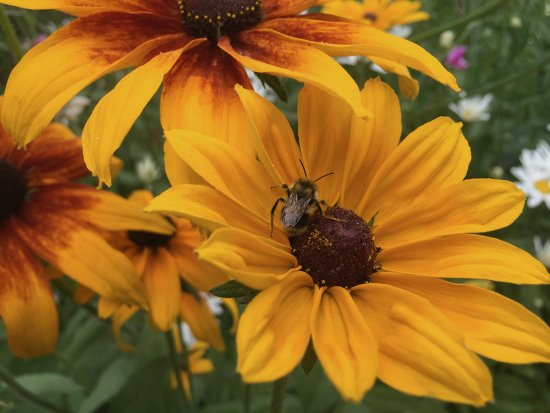 |
| A bee gathers pollen from a Blackeyed Susan |
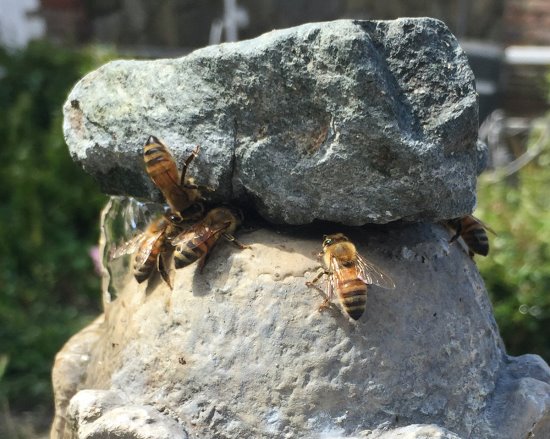 |
| Add a rock to a birdbath or fountain providing a drinking perch for bees. |
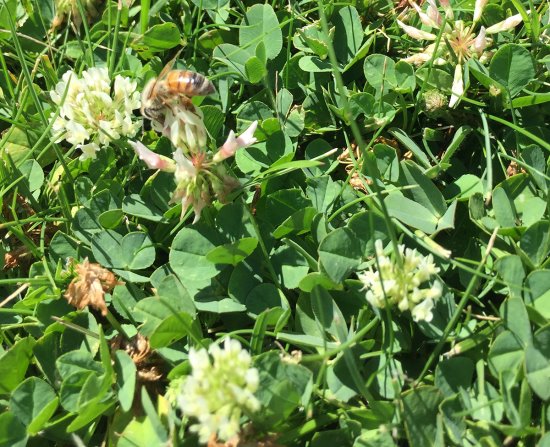 |
| Clover is a favorite of bees. |
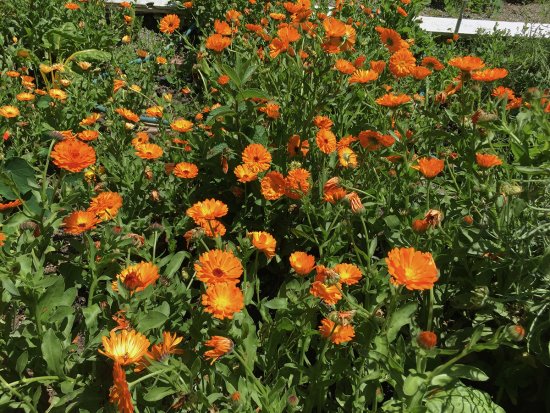 |
| A field of calendulas brings in the pollinators, |
 |
| Ruffled peach bearded iris. |
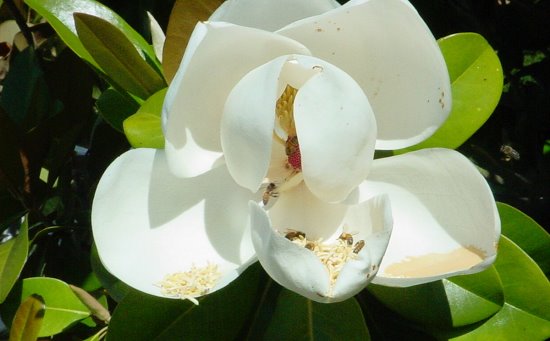 |
| A bee buzzes in a large magnolia flower. |
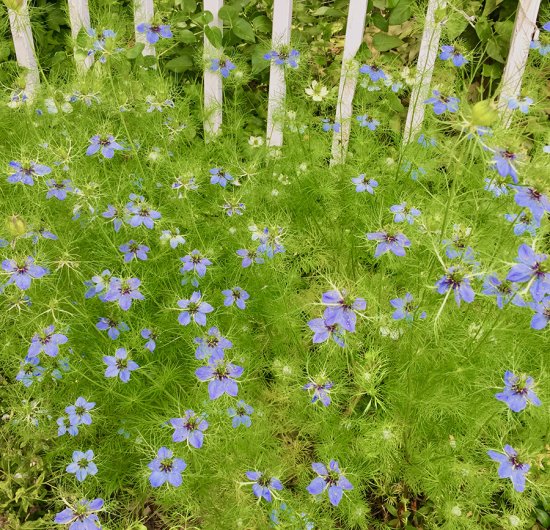 |
| Nigella, aka Love in the Mist, is also a favorite bee haven |
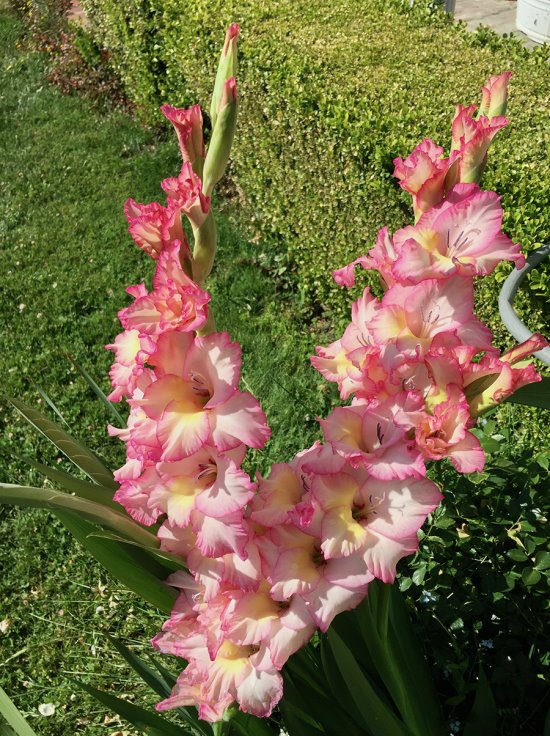 |
| Attracting bees and hummingbirds, remember to stake gladiolas. |
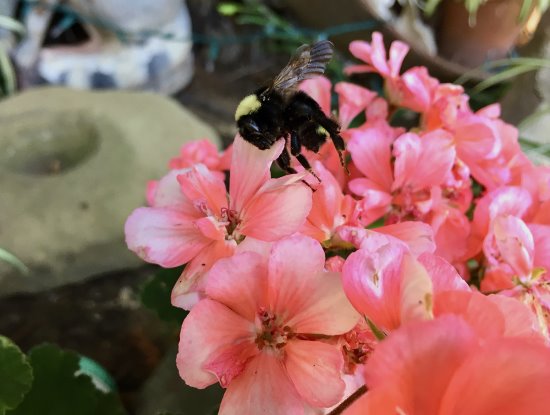 |
| A Bumblebee on a geranium flower, |
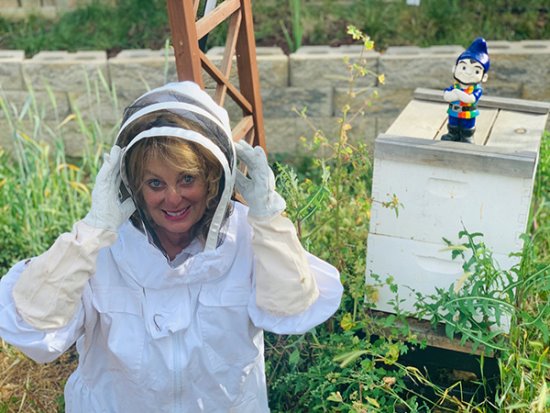 |
Cynthia Brian dressed for the bees.
Cynthia Brian, The Goddess Gardener, is available for hire to help you prepare for your spring garden. Raised in the vineyards of Napa County, Cynthia is a New York Times best-selling au-thor, actor, radio personality, speaker, media and writing coach as well as the Founder and Ex-ecutive Director of Be the Star You Are!r 501 c3. Tune into Cynthia's StarStyler Radio Broad-cast at
www.StarStyleRadio.com. Buy copies of her books, including, Chicken Soup for the Gardener's Soul, Growing with the Goddess Gardener, and Be the Star You Are!
www.cynthiabrian.com/online-store. Receive a FREE inspirational music DVD and special savings. Hire Cynthia for writing projects, garden consults, and inspirational lectures.
Cynthia@GoddessGardener.com
www.GoddessGardener.com |
|
|
|
















